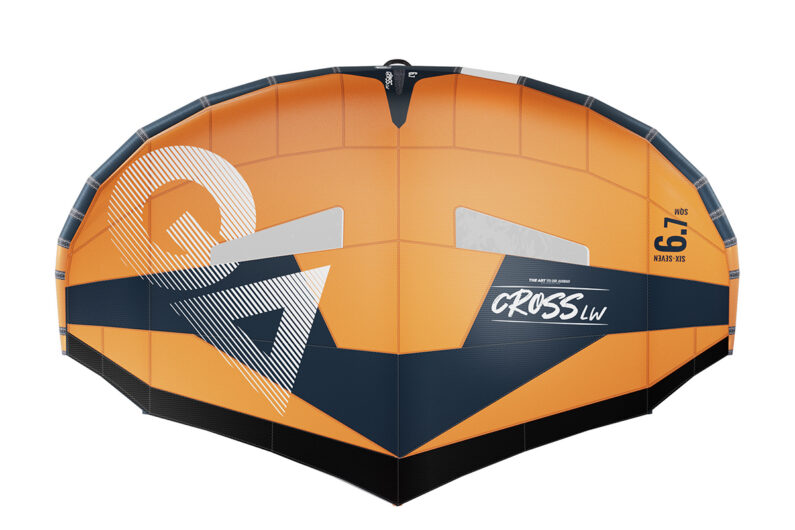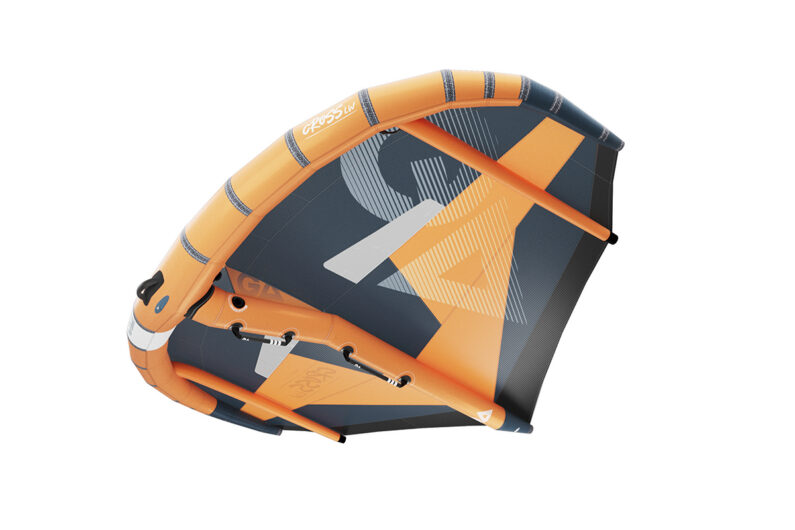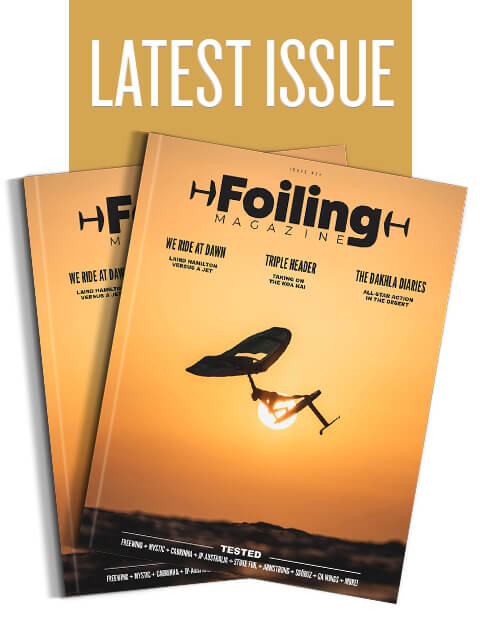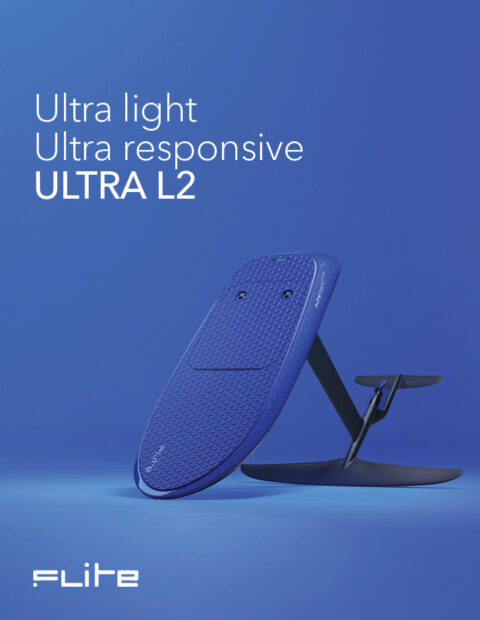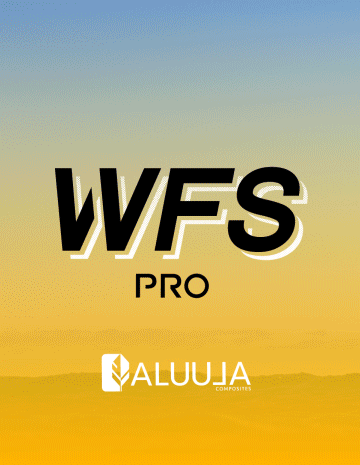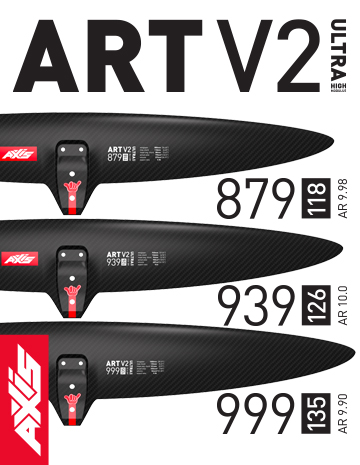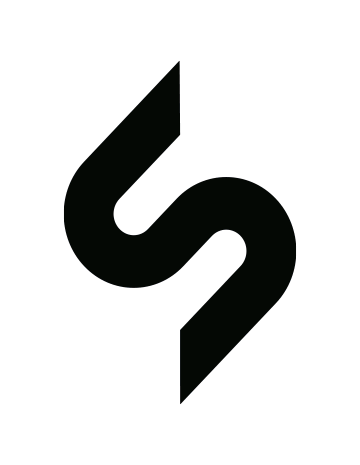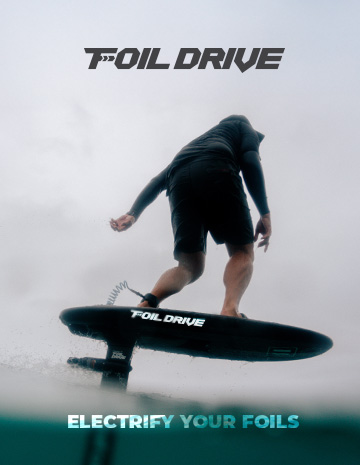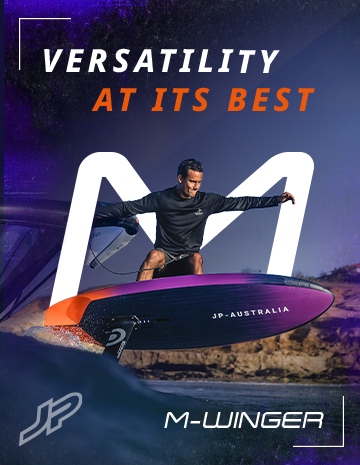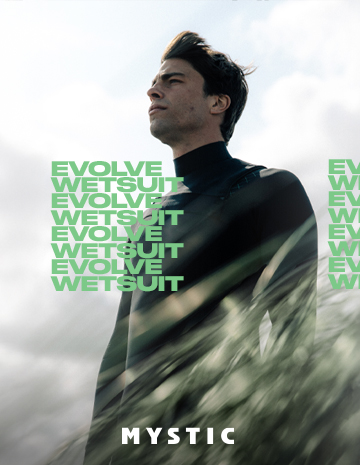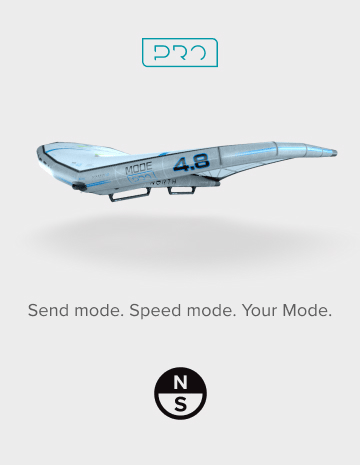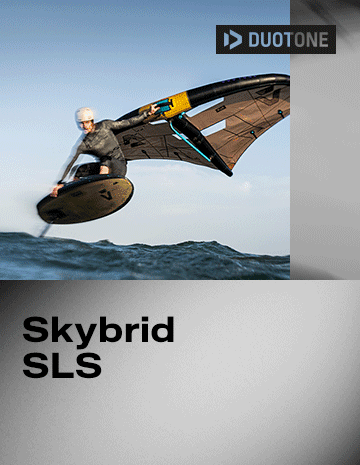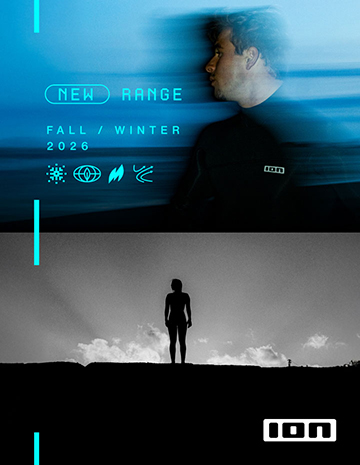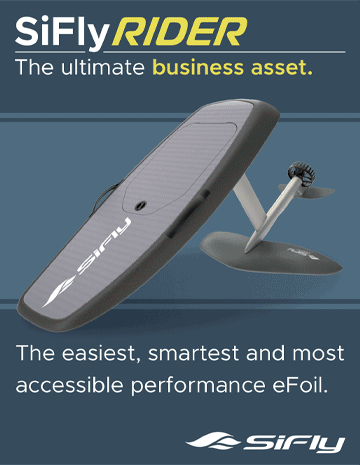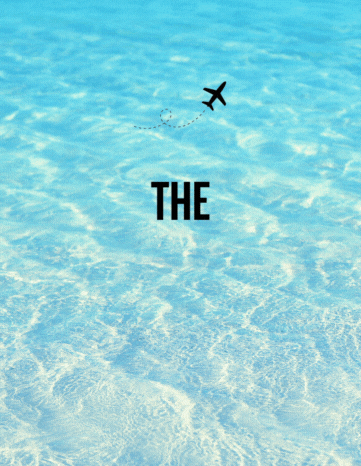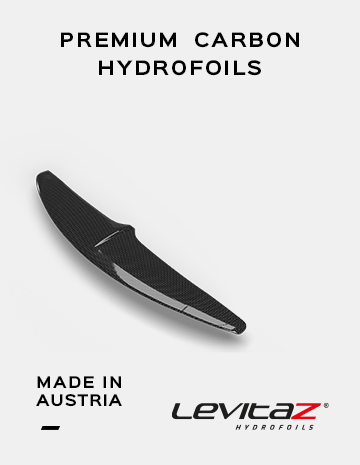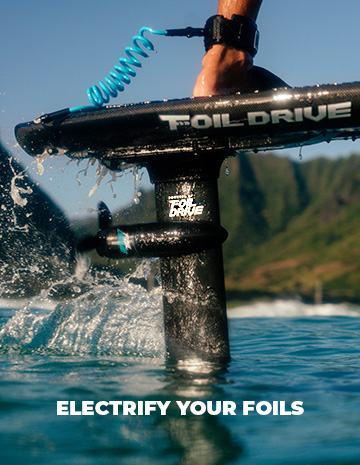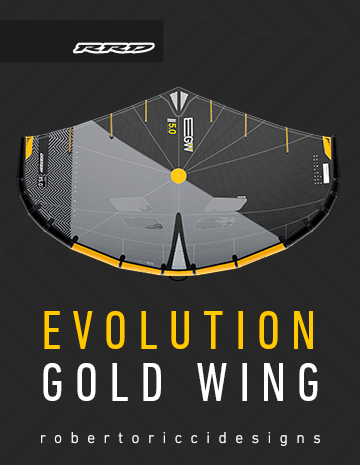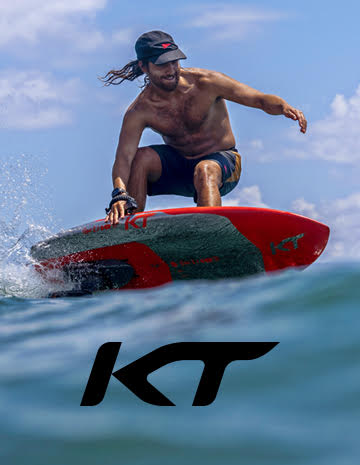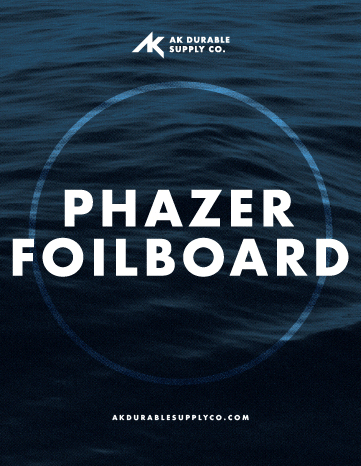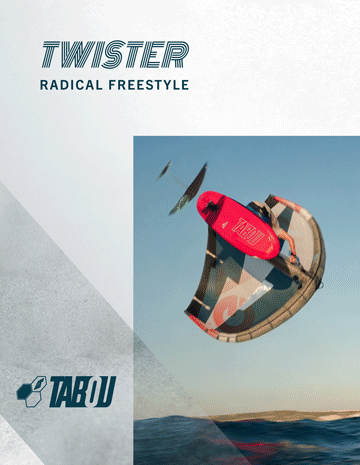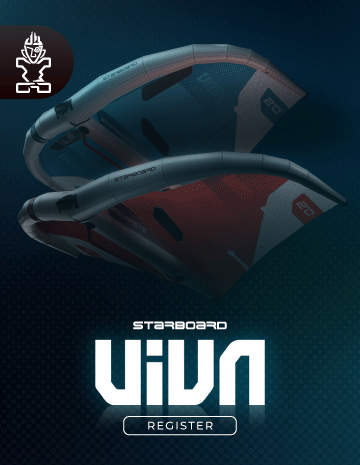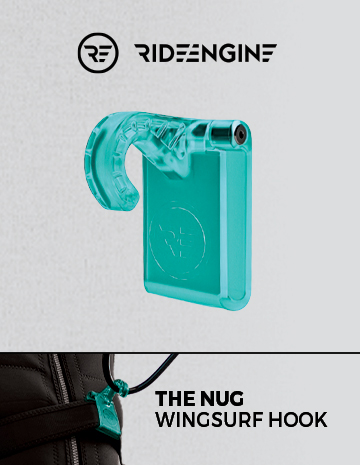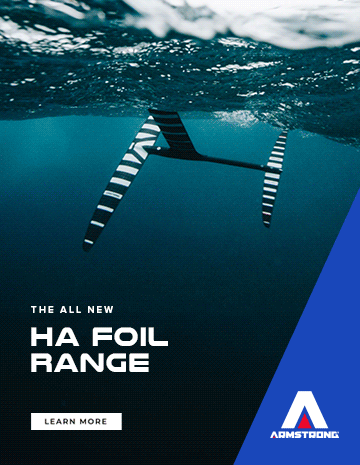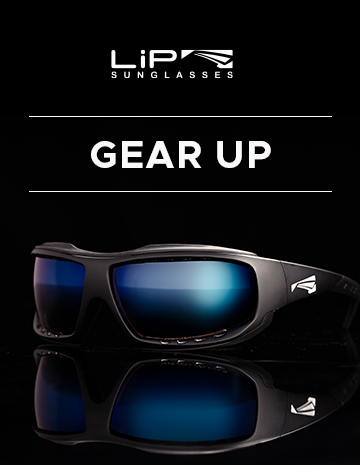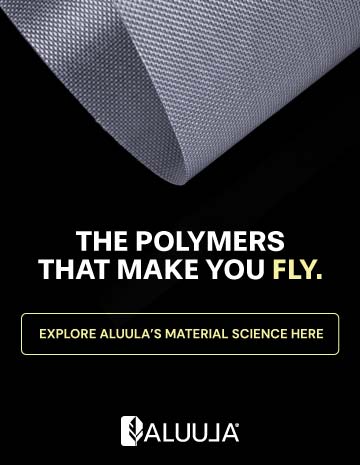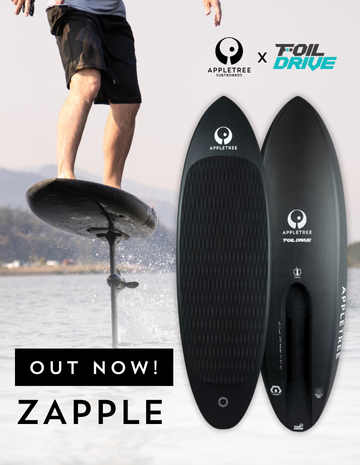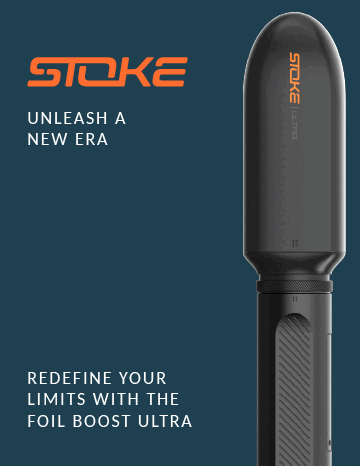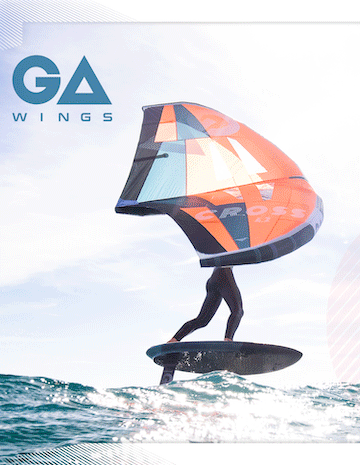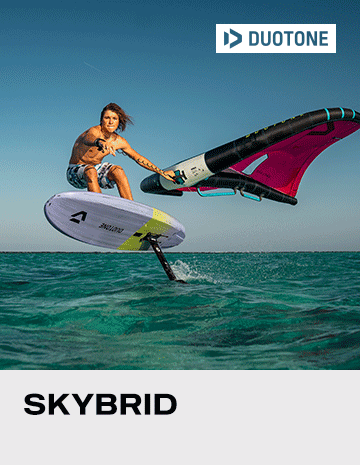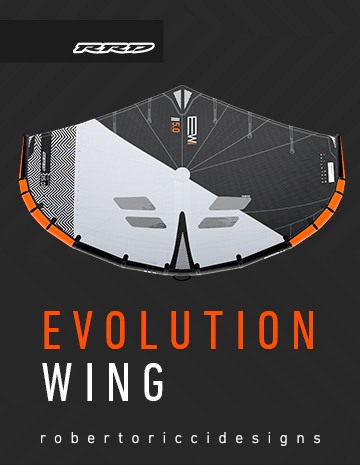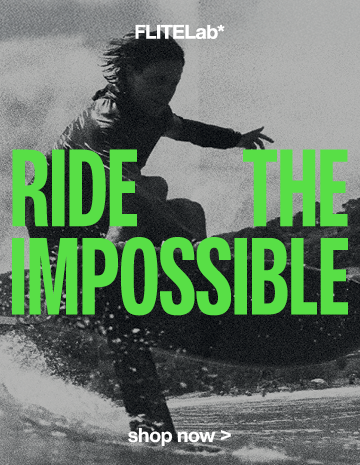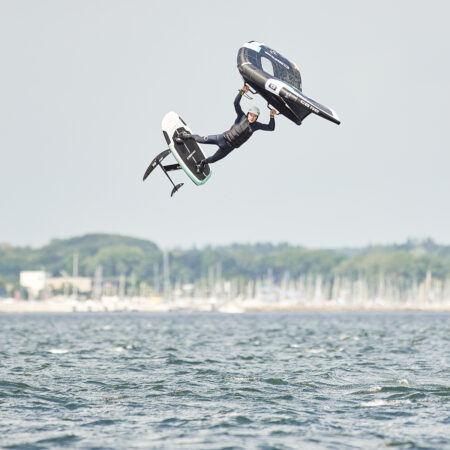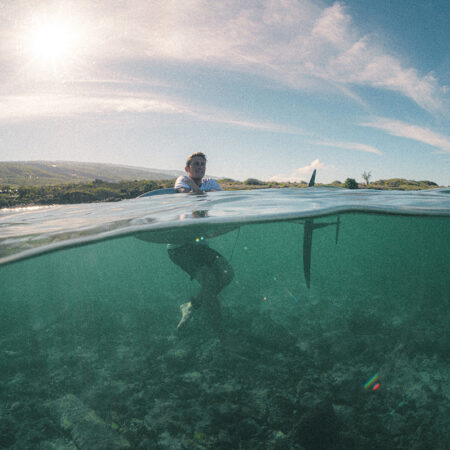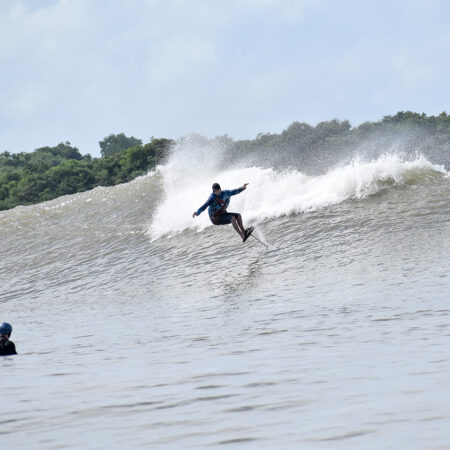INBOUND: GA Wings Cross LW
GA Wings’ 2024 CROSS wing now has its very own lightwind version too. We got in touch with Urs Hungerbühler, GA Wings’ Head Wing, Foil & Kite Designer, to find out what the key components are in making this the perfect wing for heading out in the lower knot ranges…
In what ways does the new lightwind version of the CROSS differ to its standard counterpart?
The most visible difference is the frame with its three struts. The extra struts towards the tips have two main purposes. Firstly, a frame with three struts allows us to design the outline of the wing much more compact in order to keep the wing-span reasonable. Looking at the outline, you can see that the chord is kept long all the way to the lateral struts and then the trailing edge is “cut-away” in order to keep the tip narrow. This cut-away prevents the tip dragging in the water.
Secondly, the lateral struts allow us to keep a fairly deep (and longer) profile closer to the tip. Those lateral struts do have a profile and are attached to the canopy like on a kite and support the profile. The result is a more compact wing with more profile over a longer wingspan, more area in the middle part of the wing, still with a narrow tip to prevent dragging in the water. This provides outstanding lightwind power generation and agile handling, which makes pumping super easy.
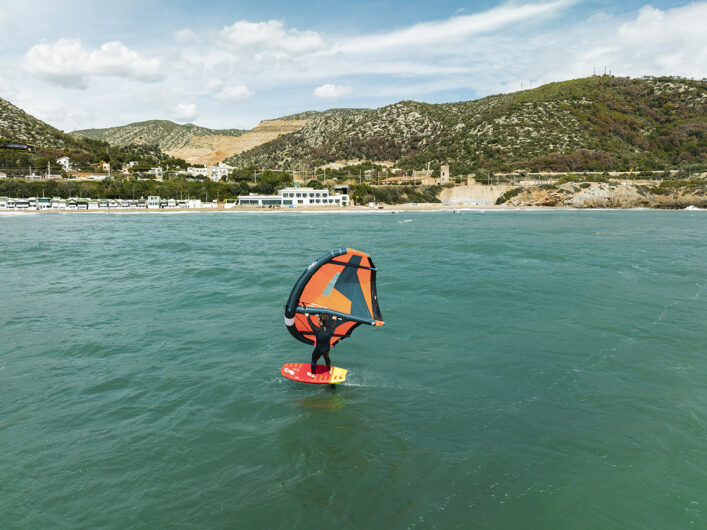 You’ve employed some new materials in the canopy and trailing edge, did you experiment with a few combinations and how did you settle on the final choices?
You’ve employed some new materials in the canopy and trailing edge, did you experiment with a few combinations and how did you settle on the final choices?
Yes, we made and tested prototypes with plenty of different material mixes. On wings this big, the weight is quite crucial. On the other hand, it still needs to be as durable as possible. The load per area on big wings is less, of course, and therefore some areas don't need to be that strong or stiff as they do on small wings.
In general, we use the same materials as on the normal CROSS wings, so our ForceTec Dacron and VoltNova triple and VoltNova+ double ripstop spinnakers, but some reinforcements are not needed on the LW versions. Also, the panel-layout itself is a bit different, because of less load in the canopy. And then we did save more weight using different construction methods than with lighter materials.
The most weight could be saved in the tubes, but here the load is not lower. For that reason, we are also working on a TEAM version of the CROSS LW with our brand-new Project One material, an Aramid reinforced UPE, which is lighter and stronger. This version will definitely be quite a bit more expensive than the regular version, but the lightwind performance will set new standards.
Is it challenging to calculate pre-tension into the sail design? And is it a manual process or more CAD based?
It's not the easiest thing to do and at the beginning we did some manual changes in prototypes to find out the right tension. But now I do it all on the computer. The term pre-tension can be a bit misleading in my opinion. It may sound as if you could shrink the canopy panels to a certain degree and that leads to tension. The sail can't be shrunk really because the seam length to the tubes needs to be preserved. Since the LE goes halfway around the wing, you would always run into trouble at some point with the seam length to the LE or strut. It can be done only to a certain degree, by cutting out triangles between the segments. That shortens the trailing edge, while preserving the length, where it touches the tubes. There might be such corrections and it might be a way to do it, but there is not a lot of control over it. And even if you do that in a CAD software, I would still do it manually.
I add the tension through the tubes by changing the angles between the segments. This is a way of doing it with a lot of control. Those angles can be changed in all directions (three dimensional) and at every segment individually. Like this it's easy to preserve the seam length and this is all done in CAD on the 3D file. So yes, all CAD.
Now, talk to us about the BAT paneling…
This was about reducing stretch and deformation in the canopy. One factor is quite clear, the orientation of the warp line in a fabric. In a fabric there is the warp and fill. Usually, fabric has less stretch in the direction of the warp. So, it is obvious to orient the panels in a way that the direction of the load is aligned with the direction of the warp.
The next factor are the seams. Seams are stiffer than the fabric itself because at the seam there is more fabric (on a flat seam, two layers, on the folded seam, three layers). The idea was to not have seams going through the entire wing from the center to the tip, because due to the different stretch of seams and fabric it can cause a furrow crossing the flow on a wing. So we shifted them apart to prevent such long straight seams. The result was the BAT panelling.
What’s your recommended foil pairing with this from your range?
Ideally you combine the CROSS LW wings with either the MP 1490, the MP 1290 or the HP 1450 or 1750 front wings, depending on the conditions and your stature, of course. The HP front wings provide more stable characteristics, leading to a bit more passive lift, while the MP front wings maximize drive and speed, leading to amazing pumping characteristics.
How’s the feedback been from those out there riding it?
We expected the CROSS LW to provide excellent performance and lift in lightwind conditions, but we’ve also been amazed by the feedback concerning handling and controllability in various conditions. The CROSS LW does get you on the foil in almost non-existent winds and glassy conditions, as pumping feels extremely natural and easy. But you’ll also remain in full control of the wing, when the wind picks up rapidly, allowing you to extend your lightwind session. Additionally, the CROSS LW flies super neutral once the profile is powered up slightly, so it feels light in your hands and you won’t have to work hard to keep flying in lulls.


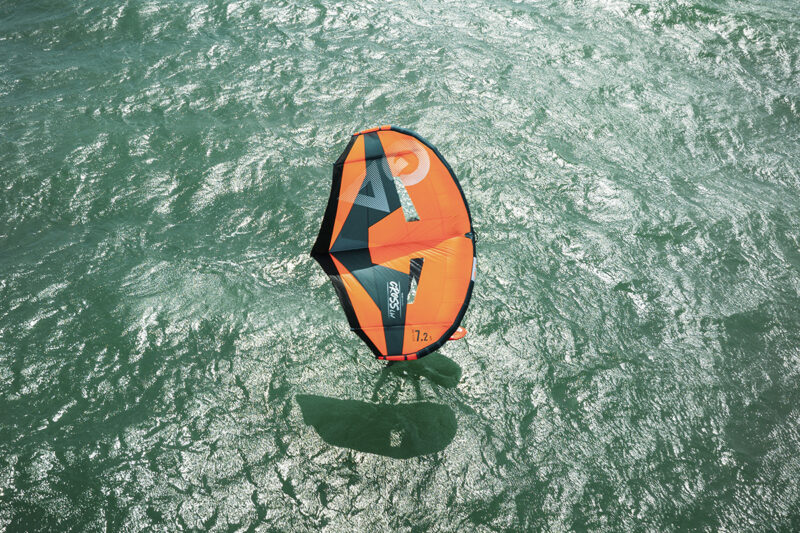
 You’ve employed some new materials in the canopy and trailing edge, did you experiment with a few combinations and how did you settle on the final choices?
You’ve employed some new materials in the canopy and trailing edge, did you experiment with a few combinations and how did you settle on the final choices?